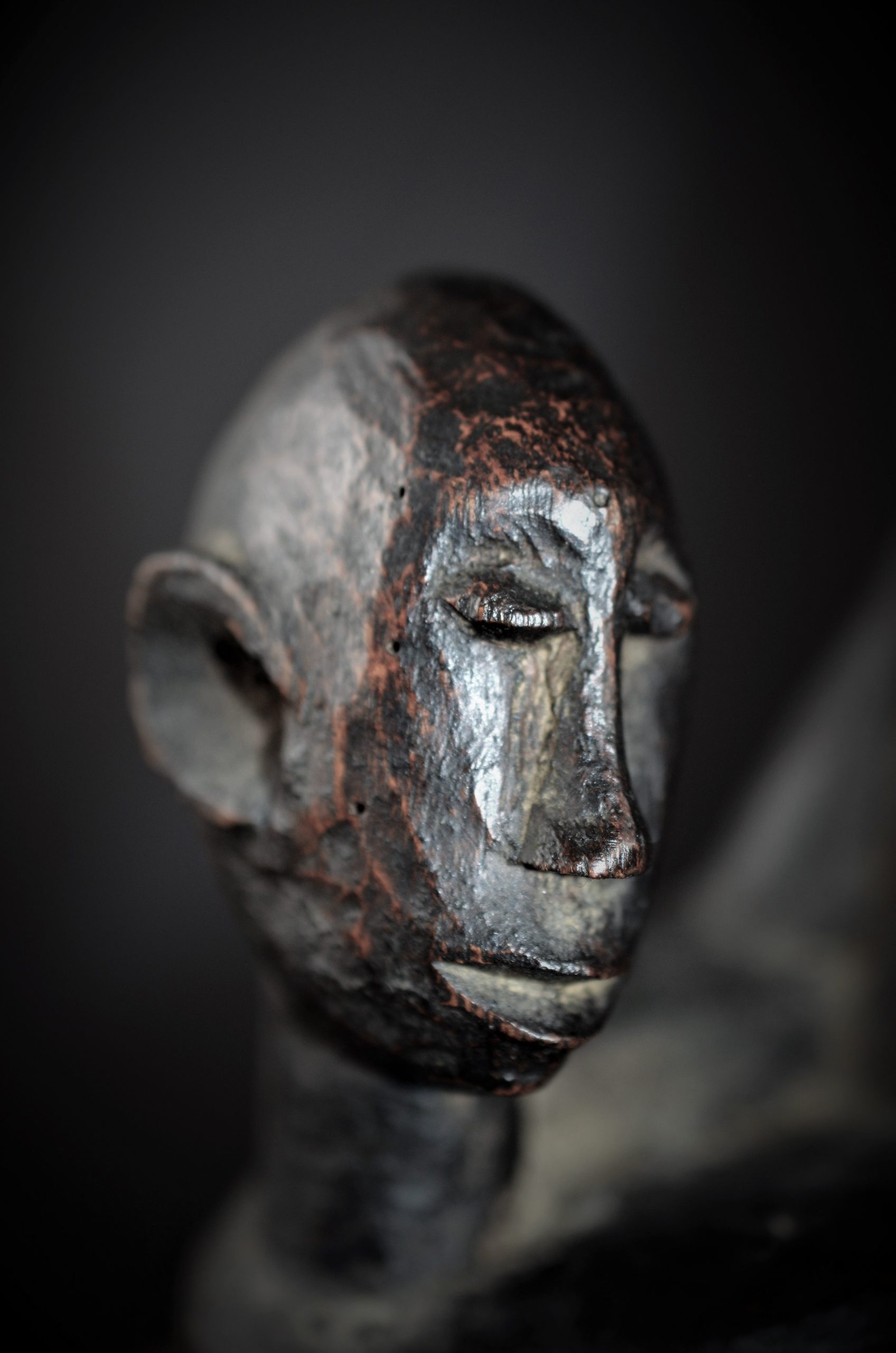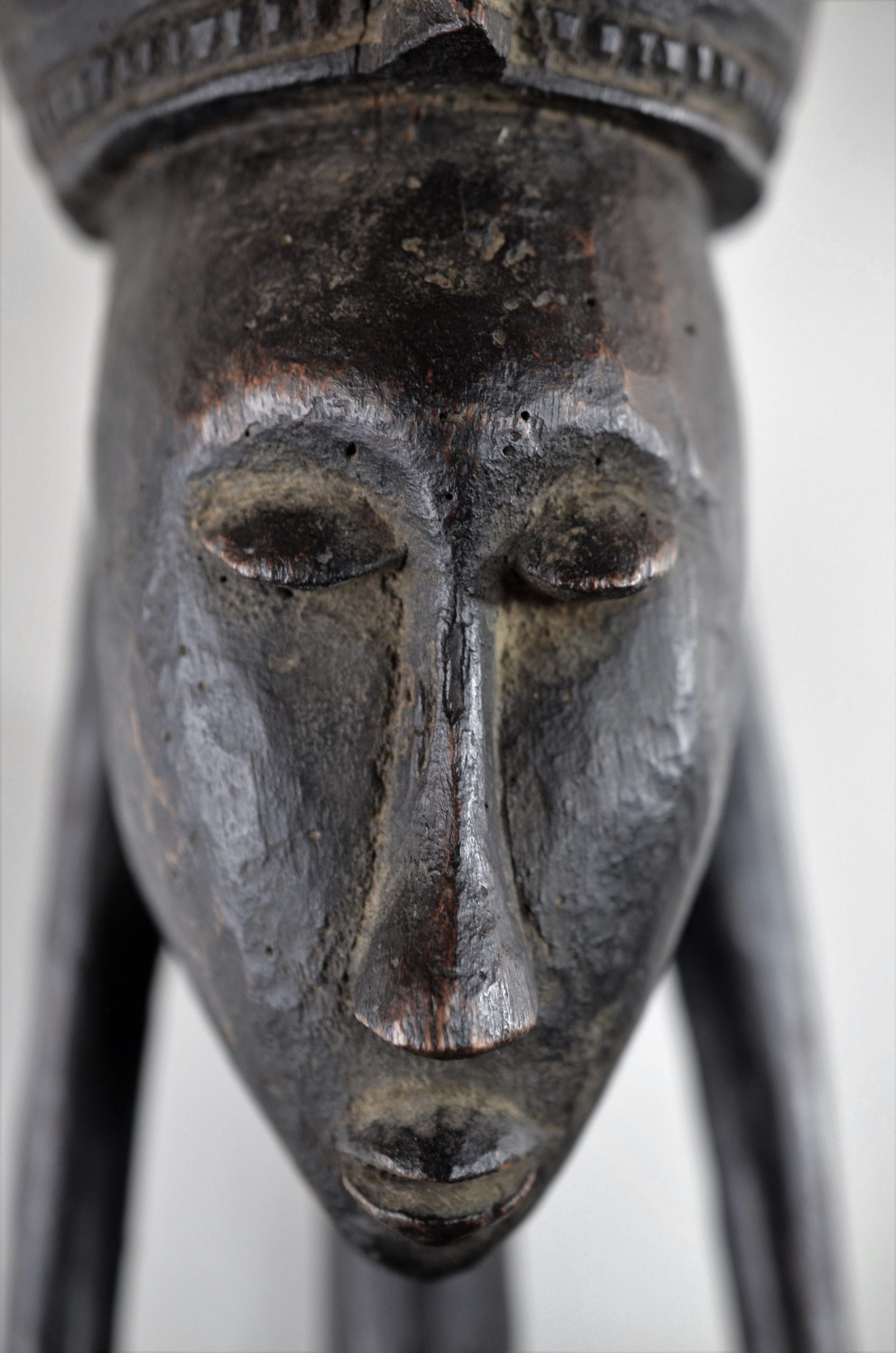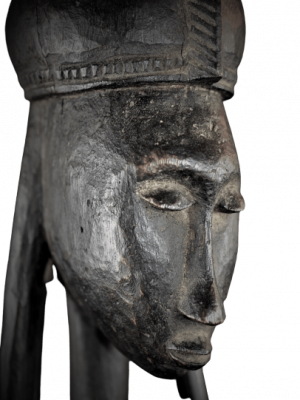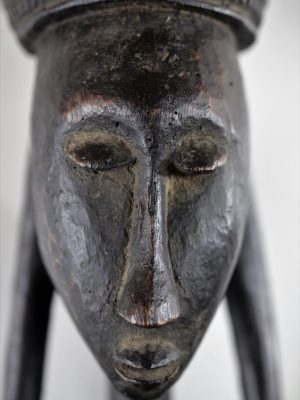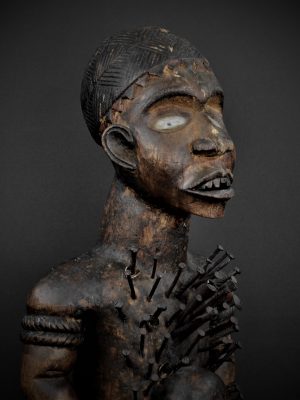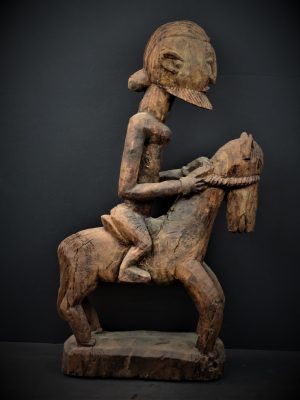Mother and child Gwandusu Koulikoro Bamana, Mali
Sold
Large statue Gwandusu representing the ideal woman, in the classical attitude of the statuary of Gwan, seated on a stool, with the arms bent at the elbows tightly hugging her child under a large chest, here accentuated by linear shapes and sharped verticality, angular volumes reduced to the essential. The centrality of mother and child sculptures within the ritual of Gwan of the Jo society expresses the importance of fertility and childbearing not only for women but for the whole community. The head atop of a long neck is topped with a high crest-like headdress and three braids that descend to the shoulders and back. The serene face with lowered eyelids, the long thin nose and the small mouth, fits into an oval shape. The sculpture features a generous tapered chest projecting from the shoulders. She holds her child above a protruding navel. The tubular, slender and elongated limbs are adorned with sculpted bracelets.
Superb deep brown-black patina, reddish in places, resulting from the applications of shea butter regularly performed by women during worship in order to maintain this ancestral symbol of fertility.
GO TO THE VIDEO GO TO THE CATALOG
Origin
Collected in situ in 1950 by Gabriel Sala
Ex Collection Safari Museum, ca. 1980 Montverdun
Ex Collection Marc Cohen, Saint-Raphaël, acquired in 2011
Eve Begalli collection, Grenoble, acquired in 2015
https://www.pressreader.com/monaco/monaco-matin/20161028/281779923672562
- Dimensions: H. 94 cm
- Epoque: circa 1950
- Matériaux: Bois
- Pays: Mali















